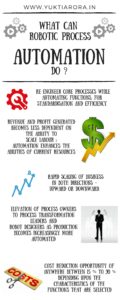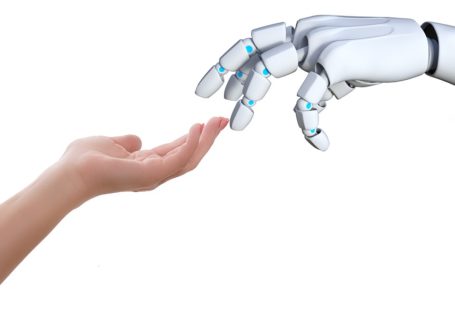 As technology continues to evolve and humanity hurtles along the roller-coaster ride that we call ‘progress’ – the single most important resource we are all scrambling to preserve and enhance is our time. At work and at play – our lives are a constant race to pack in more, deliver more, achieve more.
As technology continues to evolve and humanity hurtles along the roller-coaster ride that we call ‘progress’ – the single most important resource we are all scrambling to preserve and enhance is our time. At work and at play – our lives are a constant race to pack in more, deliver more, achieve more.
Especially so in our workspaces – as technology begins to replicate repetitive, clerical and compliance based tasks, thus creating pressure to deliver additional and better value – for employees to hold on to their jobs.
Robotic Process Animation. Not Robots.
This is where Robotic Process Automation or RPA enters the picture. We all associate robots with metallic, humanoid looking creatures with four limbs – but there exist software robots that are designed to automatically perform repetitive, rules-driven tasks and processes in back office settings.
Using recorders and easy programming language, RPA can perform common tasks such as queries, cut/paste, merging, button clicks, etc. Thus it is computer-coded, rules based software that automates manual activities and is especially suited to a single set of specialised tasks which can then be scaled up in terms of performance volumes.
For most organisations, routine back office processes can be expensive, inefficient, with the possibility of high levels of errors. This is where RPA can ensure improved operational performance and optimisation of existing resources. Businesses across the board are realising that Automation is the next significant digital transformation that will make employees give up working on repetitive tasks and processes.
RPA for Value Creation
Automation is thus a key enabler of shareholder value for client organisations and specifically when it comes to back office functions. Research studies on shared services conducted by Big 4 consulting firms have clearly highlighted increasing levels of automation as an important strategic priority for enterprises. Robotic Process Automation will allow employees to concentrate on creating and delivering value-adding initiatives, which are imperative for the long term bottom line of the firm and for individual career growth.
Presentation-layer automation software – a technology that mimics a rules-based, non-subjective process without compromising on an existing IT architecture – are able to consistently carry out prescribed functions and easily scale up or down to meet demand. Process Automation can hence easily undertake back-office processes in Accounting & Finance, Supply Chain Management, Procurement, Customer Service & Relationship Management and Human Resource Management. Specific processes across these verticals can include data entry, issue of purchase orders, creation of online access credentials and business processes that require “swivel-chair” access to multiple existing systems.
Other Possibilities of RPA
- Re-engineer core processes while automating functions, for standardization and efficiency
- Revenue and profit generated becomes less dependent on the ability to
scale labor; automation enhances the abilities of current resources - Rapid scaling of business in both directions – upward or downward.
- Elevation of process owners to process transformation leaders and
robot designers as production becomes increasingly more automated - Cost reduction opportunity of anywhere between 15 % to 90 % – depending upon the characteristics of the functions that are selected
As RPA brings in technologically-advanced solutions to more and more businesses, operating models that adopt automation, whether in-house or off-shored, will cut costs, drive efficiency and improve performance quality and deliverables.



